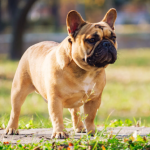Here is a summary of the key points on why dachshunds are considered the worst breed by some:
Table of Contents
Health Issues
Dachshunds are prone to several serious health problems due to their unique body structure, including:
- Intervertebral disc disease (IVDD) – can lead to paralysis if not treated promptly
- Hip dysplasia
- Patella luxation
- Obesity
- Dental disease
These conditions can significantly impact their quality of life and require expensive treatments.
Difficult Temperament
Dachshunds tend to be stubborn, aggressive, aloof, wary of strangers, and prone to separation anxiety and jealousy. They are not an easygoing or affectionate breed.

Challenging to Train
Their intelligence and independence make them difficult to understand and obedience train. They tend to bark, dig, chew, and be destructive.
Not Family-Friendly
Their aggression and tendency to bite makes them poor companions for households with children or other pets. They can be noisy and high-maintenance.
However, in the right environment with an experienced owner, dachshunds can still make good pets. Their health and behavior problems need to be properly managed through training, socialization, exercise, and healthcare. Their charm and loyalty appeal to some owners despite the breed’s drawbacks. But they are not the right breed for every family.

Dachshunds’ Back Issues
Dachshunds are prone to serious back issues, especially intervertebral disc disease (IVDD), due to their unique body structure. Some key points:
- Around 90% of dachshund back problems are caused by IVDD, which involves a slipped or ruptured disc in the spine. This puts pressure on the spinal cord and nerves.
- IVDD can lead to anything from mild pain to complete paralysis if not treated promptly. Around 25% of dachshunds develop IVDD in their lifetime.
- Signs of IVDD include reluctance to jump or go upstairs, crying out in pain, arching the back, loss of coordination, and paralysis.
- Being overweight puts additional strain on the back and increases risk. Keeping a healthy weight is important.
- Activities like jumping on/off furniture should be avoided. Ramps can help reduce the risk of injury.
- Medical and surgical treatments are available but costly. Preventative measures are best.

Are Dachshunds Aggressive Dogs?
Dachshunds do tend to be more aggressive than other breeds, but aggressive behavior can be managed with proper training and socialization.
Key points:
- Dachshunds ranked the most aggressive breed toward humans and other dogs in a study by the University of Pennsylvania. About 20% have bitten strangers and 30% have attacked other dogs.
- Their breeding to hunt badgers makes them genetically prone to be independent thinkers and take action on their own, sometimes aggressively.
- Dachshunds can display aggression when bored, anxious, establishing dominance, guarding territory or possessions, or fearful.
- Warning signs include growling, snarling, snapping, biting, lunging, and stiff body.
- Early and ongoing socialization and positive reinforcement training are key to reducing aggression.
- Aggression should never be encouraged or rewarded. Professional help may be needed for serious cases.
Yes, dachshunds tend to be aggressive due to their breeding and genetics. But not all dachshunds will be aggressive if properly trained and managed. Their behavior depends a lot on their environment and ownership.
Conclusion
Dachshunds’ elongated spines make them very prone to debilitating IVDD. Owners need to be vigilant about signs of back injury and take steps to minimize risk through proper care, weight management, and avoiding high-impact activities. But back problems remain common in the breed.



![[Report] New German Shepherd Husky Mix Price Worldwide image-4](https://petsyfy.com/wp-content/uploads/2023/11/image-4-150x150.png)

![Best Dog Breeds in India for Home [2022] Dachshund Price in India](https://petsyfy.com/wp-content/uploads/2022/07/Dachshund-Price-in-India-150x150.jpeg)


